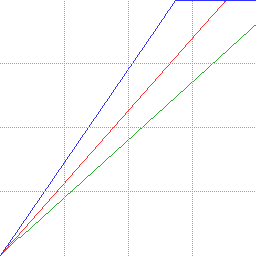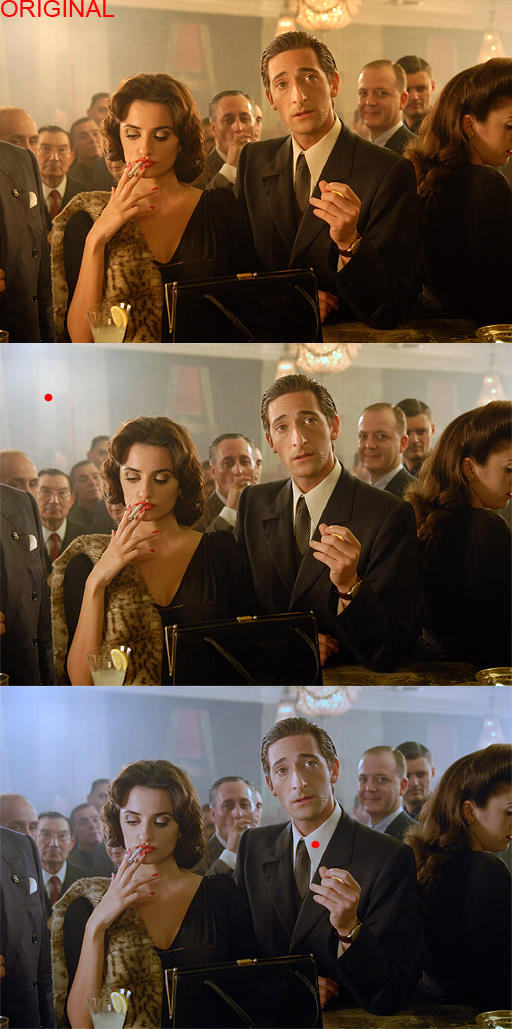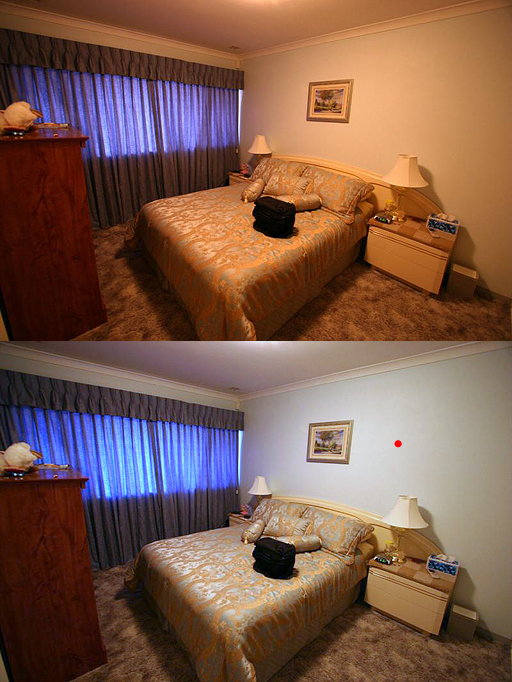Hello all,
Just a brief question on grey cards.
My understanding is that, say I'm shooting photos at a church. There are several sources of light : Candles, stained glass, real glass, artificial lighting, etc.
If I want to try and find a nice balance for the WB, taking a picture of my grey card (with most of it in the frame) while in that particular area is all I have to do, right? (And set it as the custom white balance, obviously).
Results 1 to 12 of 12
Thread: 18% grey cards
-
27th July 2009, 04:57 AM #1

- Join Date
- Jul 2009
- Location
- Victoria, British Columbia
- Posts
- 39
18% grey cards
-
27th July 2009, 05:31 AM #2

- Join Date
- Dec 2008
- Location
- New Zealand
- Posts
- 17,660
- Real Name
- Have a guess :)
Re: 18% grey cards
Hi Sean,
"Sort of" -- technically speaking, an 18% grey card (emphasis on the 18% bit) is more for setting up the exposure, but it will work for white balancing as well. In reality any spectrally neutral (fancy word for grey) card will do the job (just be sure that you don't over-expose it if it's already pretty white)
With regards to using it -- you can set a custom white balance off it, but thats doing it the hard way. The easy way for Photoshop users (and probably other programs as well) is to just use the WB tool ... you click on the grey card and it automatically adjusts the entire image ... you can then use the selected colour temperature and apply it to all other shots taken in the series.
The biggest issue with the lighting your describing though is that it's from mixed sources ... you'll be trying to apply a "one size fits all" correction, and put simply, there is no one correctin that will neutralise the colour cast generated by light from a variety of sources (nor would you necessarily want to -- eg if you took a portrait of a couple enjoying a candlelight dinner, you'd expect to have yellow / warm tones).
-
27th July 2009, 06:31 AM #3

- Join Date
- Jul 2009
- Location
- Victoria, British Columbia
- Posts
- 39
-
27th July 2009, 08:16 AM #4
Re: 18% grey cards
Colin, is it possible to do this in photshop when pp-ing a jpeg? For this kind of WB corrections I use the curves to set the black point, the white point and the gray point. Is it possible to make a correction like that on a series of photo's of the same subject? So can I select an colour temperature with a photo with something like a WiBal (I think I'm going after that one) and than apply this on a series of JPEG photo's?
-
27th July 2009, 09:00 AM #5

- Join Date
- Dec 2008
- Location
- New Zealand
- Posts
- 17,660
- Real Name
- Have a guess :)
Re: 18% grey cards
Hi Sean,
Yes - it's a lot easier (well at least I think so anyway) - plus it has added benefit of still allowing you to guestimate WB fairly closely even if you don't have a reference card in the shot (in that often you can click on something else that's supposed to be white - eg dress - shirt - (if desperate) eye).Last edited by Colin Southern; 27th July 2009 at 09:08 AM.
-
27th July 2009, 09:07 AM #6

- Join Date
- Dec 2008
- Location
- New Zealand
- Posts
- 17,660
- Real Name
- Have a guess :)
Re: 18% grey cards
Hi Jereon,
Yes - but it's easiest if you have CS3 or CS4 as you can open a JPEG in the RAW converter just as you would a RAW file (that's where the WB tool is).
You can adjust WB within Photoshop itself, but I don't know what the best techniques are - I work in LAB colour a lot and I just chuck on a curves layer and then move the end points for the A and B channels as required.
-
27th July 2009, 02:36 PM #7

- Join Date
- May 2008
- Location
- Madrid (Spain)
- Posts
- 169
Re: 18% grey cards
White balancing an image in PS (I mean in pure PS, without going to ACR) is possible in RGB mode but with limitations. According to the actual implementation of WB on any RAW developer, WB can be achieved in PS RGB mode with straight curves that set a new relative gain for every channel:
The reason for it is that even if images are not linear, the gamma curve has the property to keep any linear scaling as linear.
The bad news is that when highlights are present in the image (e.g. white blown areas), these curves will create colour casts in them given the impossibility in PS of setting an accurate toe in the curve ending in (255,255).
But conceptually it is possible, and it works on images without blown areas. The previous curves can white balance this deliberately wrong white balanced image:
Into this one:
The curves were obtained by setting the white point of the curves in the red spot, plus a previous exposure reduction curve to avoid clipping. For a tutorial with the detailed process: JPEG WHITE BALANCING IN PS. It's a nice exercise to understand the implementation of WB.
A couple of extra samples using this technique:
Regards.
-
28th July 2009, 03:37 AM #8
Re: 18% grey cards
There is another way that gives you non-destructive editing and the ability to fade the amount of correction down or up to tweak...
Sample a neutral portion of the image with the eyedropper set to 5x5 average (if there is no neutral, do a Filter->Blur->Average on the entire image and sample that) and then fill a new layer with that color. Invert (Cntrl-I) the filled layer so you now have an opposite color. Set the filled layer blending mode to Color Dodge. The color cast should be gone.
If you'd like to tweak, create a Hue/Sat adjustment layer and clip it to the filled layer, and adjust the sliders to taste.
Sample 1 PSD
Sample 2 PSDLast edited by kevinf; 28th July 2009 at 07:02 AM.
-
4th August 2009, 12:17 AM #9
Re: 18% grey cards
I am fairly new to this but I recently had occasion to shoot in a church environment. Fortunately, the first thing I did before everybody showed up, was to shoot an 18% grey target in the mixed lighting on the stage where I knew most of my subjects would be when I shot them. (I should use the word "photographed" rather than "shot" shouldn't I.) In any event I did most of my photography using a flash fill so I didn't use the custom white balance for that but when I shot without the flash using the custom white balance I didn't have to tinker with the color at all. Perhaps beginners luck but I was very pleased with the custom white balance using the 18% grey target on this occasion.
This was a 100th birthday celebration....I am not a wedding photographer.
Chuck
-
4th August 2009, 03:18 AM #10

- Join Date
- Dec 2008
- Location
- New Zealand
- Posts
- 17,660
- Real Name
- Have a guess :)
Re: 18% grey cards
Hi Chuck - custom white balances do work just fine, in fact in an environment like you were in (where the colour temperature isn't changing) it's probably the easiest technique.
The other approach is to just include the grey card in one of the shots and then adjust later in post-processing; for some reason this seems to frighten a lot of people, but it's only a few mouse clicks in an Adobe environment - one simply opens the folder in Bridge - select all - open all in ACR - adjust the temperature with the white balance eyedropper tool - and then apply that temperature to all the other images. Probably just as quick (or even quicker) than setting a custom WB. (Not trying to knock the custom WB approach - you just have to remember to keep changing it as the lighting conditions change, whereas with the "adjust afterwards" approach you can fix it all in post processing (easiest if you have the grey card in one of the shots for each lighting type, although anything white can be used with reasonably good results).
-
4th August 2009, 04:50 AM #11

- Join Date
- Nov 2008
- Location
- Gorokan NSW Australia
- Posts
- 408
Re: 18% grey cards
One of the best things I have done recently, after reading a recent thread here, was to buy a Whibal 18% grey card.
In a particular situation recently the camera on auto white balance shot at 4800, the Whibal card said 5200. Guess which skin tones looked best?
-
5th August 2009, 05:47 PM #12

 Helpful Posts:
Helpful Posts: 
 Reply With Quote
Reply With Quote





